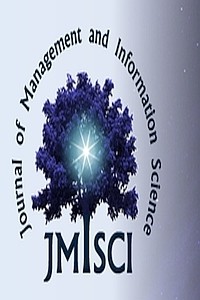Strategy Development for Future Security Environment
Strategy Development for Future Security Environment
___
- Cassirer, E. (2004). Substance and function and Einstein's theory of relativity. Courier Corporation.
- Eisenhower, G. D. D. (2013). Army 2020 and Beyond Sustainment White Paper.
- Foster, G. D. (1990). A Conceptual Foundation for a Theory of Strategy. The Washington Quarterly, 13(1), 43-59.
- Gray, C. S. (1982). Strategic studies: a critical assessment (Vol. 70). Praeger Pub Text.
- Halleck, H. W. (1863). Elements of Military Art and Science; Or, Course of Instruction in Strategy, Fortification, Tactics of Battles, &c., Embracing the Duties of Staff, Infantry, Cavalry, Artillery, and Engineers. D. Appleton & Company.
- Jones, F. L. (2008). Toward a Strategic Theory of Terrorism: Defining Boundaries in the Ongoing Search for Security. US Army War College Guide to National Security Issues, 1.
- Kurzweil, R. (2001). The Law of Accelerating Returns. Published on KurzweilAI. net March 7, 2001. ,
- Lee, S. F., Lo, K. K., Leung, R. F., & Sai On Ko, A. (2000). Strategy formulation framework for vocational education: integrating SWOT analysis, balanced scorecard, QFD methodology and MBNQA education criteria. Managerial Auditing Journal, 15(8), 407-423.
- Luttwak, E. (2001). Strategy: the logic of war and peace. Harvard University Press.
- Luvaas, J. (1986). Clausewitz, Fuller and Liddell Hart. The Journal of Strategic Studies, 9(2-3), 197-212.
- Lykke Jr, A. F. (1997). Defining military strategy. Military Review, 77(1), 183.
- Murray, W., & Grimsley, M. (1994). Introduction on Strategy. The making of strategy.
- Osgood, D. W., Foster, E. M., & Courtney, M. E. (2010). Vulnerable populations and the transition to adulthood. The Future of Children, 20(1), 209-229.
- Strachan, H. (2005). The lost meaning of strategy. Survival, 47(3), 33-54.
- Tzu, S. (2013). The art of war. Orange Publishing.
- Von Clausewitz, C. (2004). On war. Digireads. com Publishing.
- Yarger, H. R. (2008). Toward a theory of strategy: Art Lykke and the US Army War College strategy model. US Army War College Guide to National Security Issues, 1, 44-47.
- Başlangıç: 2013
- Yayıncı: Kerim GÖZTEPE
Leadership and Mission Command in Future Operational Environment
Celil Aybar, Gökhan Baltacıoğlu, Süleyman Özkaynakçı
Transforming an Army:The Trap of Culture, Politics, Technology,and the Economy
Should We Rely on Intelligence Cycle?
Bahadir Aydın, Zafer Ozleblebici
Creativity for the Leaders of Future
Evolution of the International Security Environment
How to Make Social Media More Effective as an Exploitation Area
The Role of Social Marketing in Creating Obesity Awareness and Its Effects on Life Quality
Mustafa Karadeniz, Güzide Eroğlu Pektaş, Mustafa Gözüyukarı
